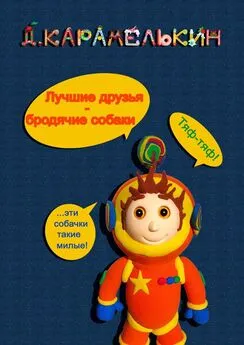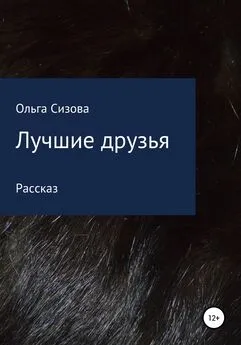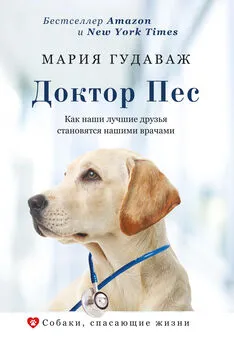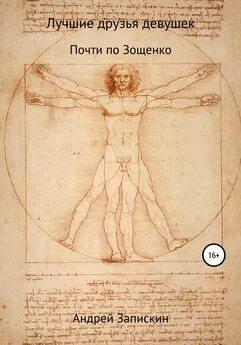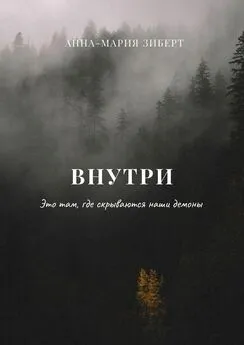Мария Гудаваж - Доктор Пес [Как наши лучшие друзья становятся нашими врачами] [litres]
- Название:Доктор Пес [Как наши лучшие друзья становятся нашими врачами] [litres]
- Автор:
- Жанр:
- Издательство:Литагент АСТ
- Год:2020
- Город:Москва
- ISBN:978-1-5247-4304-8, 978-5-17-116997-8
- Рейтинг:
- Избранное:Добавить в избранное
-
Отзывы:
-
Ваша оценка:
Мария Гудаваж - Доктор Пес [Как наши лучшие друзья становятся нашими врачами] [litres] краткое содержание
Собака лучше любого электронного прибора способна определить, например, заболевание раком – она делает это по запаху. Точно также собаки могут заранее предупреждать больного о приближении судорог или спазмов, о приступах внезапного сна и обмороках. Они сопровождают больных детей и взрослых, становясь для них не только друзьями, но и надежной опорой.
Автор рассказывает о том, как обучают и дрессируют таких собак и какие связи устанавливаются между ними и людьми, которые зачастую доверяют им свою жизнь. В формате PDF A4 сохранен издательский макет.
Доктор Пес [Как наши лучшие друзья становятся нашими врачами] [litres] - читать онлайн бесплатно ознакомительный отрывок
Интервал:
Закладка:
«Cremains Recovery after California Wildfire». Institute for Canine Forensics. Accessed 1 November 2018. https://www.icfk9.org/cremains-recovery.
Cuthbert, Lori. «How Sniffer Dogs Find Cremated Human Remains after Wildfires». National Geographic , 30 October 2018. www.nationalgeographic.com/animals/2018/10/sniffer-dogs-human-remains-california-wildfires-cremation-news/.
Daley, Jason. «Sniffer Dogs Represent the Latest Weapon in the Fight Against the Illegal Ivory Trade». Smithsonian , 28 August 2018. www.smithsonianmag.com/smart-news/sniffer-dogs-and-new-technology-team-save-elephants-180970143/.
Donahue, Michelle Z. «Meet the Dogs Sniffing Out Whale Poop for Science». Smithsonian , 8 February 2016. www.smithsonianmag.com/science-nature/meet-dogs-sniffing-out-whale-poop-science- 180958050/.
Fiegl, Amanda. «Meet Migaloo, World’s First «Archaeology Dog». « National Geographic , 11 December 2012. news.nationalgeographic.com/news/2012/12/121210-archaeology-dogs-australia-conservation-canines/.
Geggel, Laura. «Elephants Can Outsniff Rats and Dogs». Live Science , 22 July 2014. www.livescience.com/46940-elephant-genes-sense-of-smell.html.
Gray, Richard. «The Many Reasons Why Dogs Might Roll in Smelly Poo». Earth , BBC News, 8 June 2017. www.bbc.com/earth/story/20170608-the-many-reasons-why-dogs-might-roll-in-smelly-poo.
«Hero Rats». YouTube video, 1:19, published by iloveratrats, 4 July 2011. https://youtube /WS1gh3QtB44.
Interviews with Matthew Staymates, PhD, fluid dynamicist and mechanical engineer, National Institute of Standards and Technology; Craig Angle, PhD, codirector, Canine Performance Sciences, College of Veterinary Medicine, Auburn University; Cindy Otto, DVM, PhD, founder and executive director, Penn Vet Working Dog Center, University of Pennsylvania; Naoto Anzue, Guide Dog & Service Dog & Hearing Dog Association of Japan; Marie-José Enders, PhD, Royal Dutch Guide Dog Foundation; Dina Zaphiris, In Situ Foundation; Leone, Renato, and Zeljka Brašnić; Takayuki Uozumi, PhD, and Kazuko Matsubara, PhD, Hirotsu Bio Science; Robyn Stark, program manager, Steve Austin Conservation Canines; and Clive Wynne, PhD, Canine Science Collaboratory, Arizona State University.
Japan Assistance Dog Welfare Association. Accessed October 2017. http://www.kaijoken.or.jp/about/index.html.
Jenkins, Eileen K., et al. «When the Nose Doesn’t Know: Canine Olfactory Function Associated with Health, Management, and Potential Links to Microbiota». Frontiers in Veterinary Science 5 (29 March 2018), doi:10.3389/fvets.2018.00056.
«Key Statistics for Ovarian Cancer». American Cancer Society. Accessed November 2018. www.cancer.org/cancer/ovarian-cancer/about/key-statistics.html.
Kimball, Bruce A., et al. «Avian Influenza Infection Alters Fecal Odor in Mallards». PLoS One 8, no. 10 (16 October 2013), doi:10.1371/journal.pone.0075411.
Levenson, Richard M., et al. «Pigeons ( Columba livia ) as Trainable Observers of Pathology and Radiology Breast Cancer Images». PLoS One 10, no. 11 (18 November 2015), doi:10.1371/journal.pone.0141357.
Mangaly, Jennifer. «About a Wolf’s Sense of Smell». Sciencing , last modified 24 April 2017. sciencing.com/wolfs-sense-smell-4565769.html.
Niimura, Yoshihito, et al. «Extreme Expansion of the Olfactory Receptor Gene Repertoire in African Elephants and Evolutionary Dynamics of Orthologous Gene Groups in 13 Placental Mammals». Genome Research 24, no. 9 (September 2014): 1485–1496, doi:10.1101/gr.169532.113.
Perlman, Howard. «A Million Gallons of Water – How Much Is It?» USGS Water Science School, last modified 6 September 2018. water.usgs.gov/edu/mgd.html.
Seidel, Jamie. «Could Cats Replace Search-and-Rescue Dogs? If We Can Motivate Them». News.com.au, 11 October 2017. www.news.com.au/technology/science/animals/could-cats-replace-search-and-rescue-dogs-if-we-can-motivate-them/news-story/57b549f5a2f77399485412c696fdb84b.
Shirasu, Mika, and Kazushige Touhara. «The Scent of Disease: Volatile Organic Compounds of the Human Body Related to Disease and Disorder». Journal of Biochemistry 150, no. 3 (September 2011): 257–266, doi:10.1093/jb/mvr090.
Shreve, Kristyn R. Vitale, and Monique A. R. Udell. «Stress, Security, and Scent: The Influence of Chemical Signals on the Social Lives of Domestic Cats and Implications for Applied Settings». Applied Animal Behaviour Science 187 (February 2017): 69–76, doi:10.1016/j.applanim.2016.11.011.
Staymates, Matthew E., et al. «Biomimetic Sniffing Improves the Detection Performance of a 3D Printed Nose of a Dog and a Commercial Trace Vapor Detector». Scientific Reports 6, no. 1 (December 2016), doi:10.1038/srep36876.
Stingl, Jim. «Dog Sniffs Out Her Owner’s Ovarian Cancer Three Times, and She Is Right on the Nose». Milwaukee Journal Sentinel , 30 November 2018. www.jsonline.com/story/news/columnists/jim-stingl/2018/11/30/womans-dog-detects-her-ovarian-cancer-three-times/2154700002/.
Strauch, Martin, et al. «More than Apples and Oranges – Detecting Cancer with a Fruit Fly’s Antenna». Scientific Reports 4, no. 1 (6 January 2014), doi:10.1038/srep03576.
«13 Fun Facts about Bicycles in Amsterdam». Awesome Amsterdam. Accessed 9 October 2018. awesomeamsterdam.com/ facts-about-bicycles-in-amsterdam/.
Tyson, Peter. «Dogs’ Dazzling Sense of Smell». NOVA , PBS, 4 October 2012. www.pbs.org/wgbh/nova/article/dogs-sense-of-smell/.
University of Konstanz. «The Scent of Cancer: Detecting Cancer with Fruit Fly’s Antenna». ScienceDaily , 24 January 2014. www.sciencedaily.com/releases/2014/01/140124082702.htm.
Viegas, Jen. «Here’s Why Cats Might Make Skilled Search and Rescue Animals». Seeker , 22 February 2017. www.seeker.com/why-cats-could-make-skilled-search-and-rescue-animals-2277969871.html.
Wasser, Samuel K, et al. «Scat Detection Dogs in Wildlife Research and Management: Application to Grizzly and Black Bears in the Yellowhead Ecosystem, Alberta, Canada». Canadian Journal of Zoology 82, no. 3 (March 2004): 475–492, doi:10.1139/z04–020.
Williams, Caroline. «Crittervision: What a Dog’s Nose Knows». New Scientist , 17 August 2011. www.newscientist.com/article/mg21128262–000-crittervision-what-a-dogs-nose-knows/.
World Health Organization. Global Tuberculosis Report: 2018 . Accessed 2 January 2019. apps.who.int/iris/bitstream/handle/10665/274453/9789241565646-eng.pdf.
Глава 1
Alkeminder, Elisabeth. «Your Urine and Diabetes: What You Should Know». Diabetes Council, last modified 15 September 2018. www.thediabetescouncil.com/urine-and-diabetes/.
Blake, Donna. «The Evolution of Insulin Pumps». Voice of the Diabetic 15, no. 3 (Summer 2000). nfb.org/Images/nfb/Publications/vod/vsum0001.htm.
Brulliard, Karin. «Company Sold $25,000 «Service Dogs’ That Were Really Just Untrained Puppies, Virginia Says». Washington Post , 8 May 2018. www.washingtonpost.com/news/animalia/wp/2018/05/08/company-sold-25000-service-dogs-that-were-really-just-untrained-puppies-virginia-says/.
«Cat Saves Man’s Life». YouTube video, 1:26, published by Adam Knapik, 22 November 2011. https://youtube/v9_eGg7rD8Y.
Centers for Disease Control and Prevention. «New CDC Report: More Than 100 Million Americans Have Diabetes or Prediabetes». News release, 18 July 2017. www.cdc.gov/media/releases/2017/p0718-diabetes-report.html.
Centers for Disease Control and Prevention. «National Diabetes Statistics Report, 2017». www.cdc.gov/diabetes/pdfs/data/statistics/national-diabetes-statistics-report.pdf.
Chen, Mimi, et al. «Non-Invasive Detection of Hypoglycaemia Using a Novel, Fully Biocompatible and Patient Friendly Alarm System». BMJ 321, no. 7276 (23 December 2000): 1565–1566, doi:10.1136/bmj.321.7276.1565.
Dehlinger, Ky, et al. «Can Trained Dogs Detect a Hypoglycemic Scent in Patients with Type 1 Diabetes?» Diabetes Care 36, no. 7 (July 2013), doi:10.2337/dc12–2342.
«Diabetic Ketoacidosis». My VMC, last modified 31 May 2018. www.myvmc.com/diseases/diabetic-ketoacidosis/.
Eknoyan, Garabed, and Judit Nagy. «A History of Diabetes Mellitus or How a Disease of the Kidneys Evolved into a Kidney Disease». Advances in Chronic Kidney Disease 12, no. 2 (April 2005): 223–229, doi:10.1053/j.ackd.2005.01.002.
Fernando, Richard. «There Are Ants in My Urine!» Philippine Daily Inquirer , 1 August 2015. business.inquirer.net/196299/there-are-ants-in-my-urine.
Gonder-Frederick, Linda, et al. «Diabetic Alert Dogs: A Preliminary Survey of Current Users». Diabetes Care 36, no. 4 (April 2013), doi:10.2337/dc12–1998.
Gonder-Frederick, Linda A., et al. «Variability of Diabetes Alert Dog Accuracy in a Real-World Setting». Journal of Diabetes Science and Technology 11, no. 4 (July 2017): 714–719, doi:10.1177/ 1932296816685580.
Hardin, Dana S., et al. «Dogs Can Be Successfully Trained to Alert to Hypoglycemia Samples from Patients with Type 1 Diabetes». Diabetes Therapy 6, no. 4 (December 2015): 509–517, doi:10.1007/s13300–015–0135-x.
«Insulin Pumps». Diabetes.co.uk. Accessed 5 July 2018. www.diabetes.co.uk/insulin/Insulin-pumps.html.
Interviews with Clay, Karin, and Ken Ronk; Mark Ruefenacht, Ralph Hendrix, Mona Elder, and Carrie Treggett, Dogs4Diabetics; Kim Denton; Ben O’Neill and Dwight Cawthon, Ukiah High School; Jennifer Cattet, PhD, Medical Mutts; Luke and Dorrie Nuttall; Crystal Cockroft, Canine Hope for Diabetics; Steven Wolf, MD; Paolo Incontri (a.k.a. Bhante Upali) and Valentina Braconcini, L’Associazione Italiana Cani d’Allerta; and Lidia Calabro.
Kaplish, Lalita. «Diagnosing Diabetes: A Wee Taste of Honey». Wellcome Library, 14 November 2013. blog.wellcomelibrary.org/2013/11/diagnosing-diabetes-a-wee-taste-of-honey/.
Karamanou, Marianna, et al. «Milestones in the History of Diabetes Mellitus: The Main Contributors». World Journal of Diabetes 7, no. 1 (10 January 2016): 1–7, doi:10.4239/wjd.v7.i1.1.
Kearney, T., and C. Dang. «Diabetic and Endocrine Emergencies». Postgraduate Medical Journal 83, no. 976 (February 2007): 79–86, doi:10.1136/pgmj.2006.049445.
Los, Evan, et al. «Reliability of Trained Dogs to Alert to Hypoglycemia in Patients with Type 1 Diabetes». Journal of Diabetes Science and Technology (28 August 2016), doi: 10.1177/1932296816666537.
Luke & Jedi (website for Luke & Jedi documentary film). Accessed 7 September 2018. www.lukeandjedi.com/.
Maranda, Louise, et al. «A Novel Behavioral Intervention in Adolescents with Type 1 Diabetes Mellitus Improves Glycemic Control». Diabetes Educator 41, no. 2 (April 2015): 224–230, doi:10.1177/ 0145721714567235.
Maranda, Louise, and Olga T. Gupta. «Association between Responsible Pet Ownership and Glycemic Control in Youths with Type 1 Diabetes». PLoS One 11, no. 4 (22 April 2016), doi:10.1371/journal.pone.0152332.
Neupane, Sankalpa, et al. «Exhaled Breath Isoprene Rises During Hypoglycemia in Type 1 Diabetes». Diabetes Care 39, no. 7 (July 2016), doi:10.2337/dc16–0461.
O’Connor, M. B., et al. «A Dog’s Detection of Low Blood Sugar: A Case Report». Irish Journal of Medical Science 177, no. 2 (June 2008): 155–157, doi:10.1007/s11845–008–0128–0.
Petry, N. M., et al. «Perceptions about Professionally and Non-Professionally Trained Hypoglycemia Detection Dogs». Diabetes Research and Clinical Practice 109, no. 2 (August 2015): 389–396, doi:10.1016/j.diabres.2015.05.023.
Читать дальшеИнтервал:
Закладка:
![Обложка книги Мария Гудаваж - Доктор Пес [Как наши лучшие друзья становятся нашими врачами] [litres]](/books/1059968/mariya-gudavazh-doktor-pes-kak-nashi-luchshie-druzya-s.webp)


![Дэвид Эпштейн - Универсалы [Как талантливые дилетанты становятся победителями по жизни] [litres]](/books/1059203/devid-epshtejn-universaly-kak-talantlivye-diletant.webp)
![Александр Силаев - Философия без дураков [Как логические ошибки становятся мировоззрением и как с этим бороться?] [litres]](/books/1064394/aleksandr-silaev-filosofiya-bez-durakov-kak-logiche.webp)
![Кристин Террилл - Все наши вчера [litres]](/books/1080908/kristin-terrill-vse-nashi-vchera-litres.webp)
